Mental health concerns such as anxiety are only becoming more prevalent in today’s society. Hustle-culture means that stress levels are on the rise, making people much more vulnerable to poor mental health.
The ancient Indian practice of yoga can be a powerful too to help us calm the mind, build mental resilience and grow strong physically, mentally and spiritually in the face of modern challenges.
Here, we will explore yoga for anxiety through 10 postures, or Asanas, that work on both the body and the mind. We will uncover the ways in which yoga enhances the mind-body connection and cultivates self-compassion, leaving us with a clearer mindset and the tools to handle anxiety.
Remember, yoga is not a performance, but a modality with which to explore your inner landscape, so approach your practice free of self-judgment and with a sense of curiosity.
You can find more from me on Instagram, @flowithliz
How Yoga Can Impact Mental and Emotional States
The connection of the mind and body through yoga helps to regulate the nervous system, shifting the body from a state of heightened stress (sympathetic nervous system activation) to one of calm and relaxation (parasympathetic nervous system activation). According to the Yoga Sutras of Patanjali, “Yoga is the cessation of the fluctuations of the mind” (Yogaś citta-vṛtti-nirodhaḥ).
By becoming less attached to these mental fluctuations we all naturally have, yoga encourages mindfulness and present-moment awareness, reducing the tendency to ruminate on the past or worry about the future. It teaches us to witness our anxious thoughts, rather that to engage with them so closely.
Equally, the physical practice helps to release stored tension and emotional blockages in the body, particularly in areas like the hips and shoulders, where stress is often held. Over time, consistent practice of yoga, from Asana and Pranayama (breath control) to meditation, can lead to greater emotional resilience and a more balanced mental state.
How to Use Yoga for Anxiety Relief
Child’s Pose (Balasana)
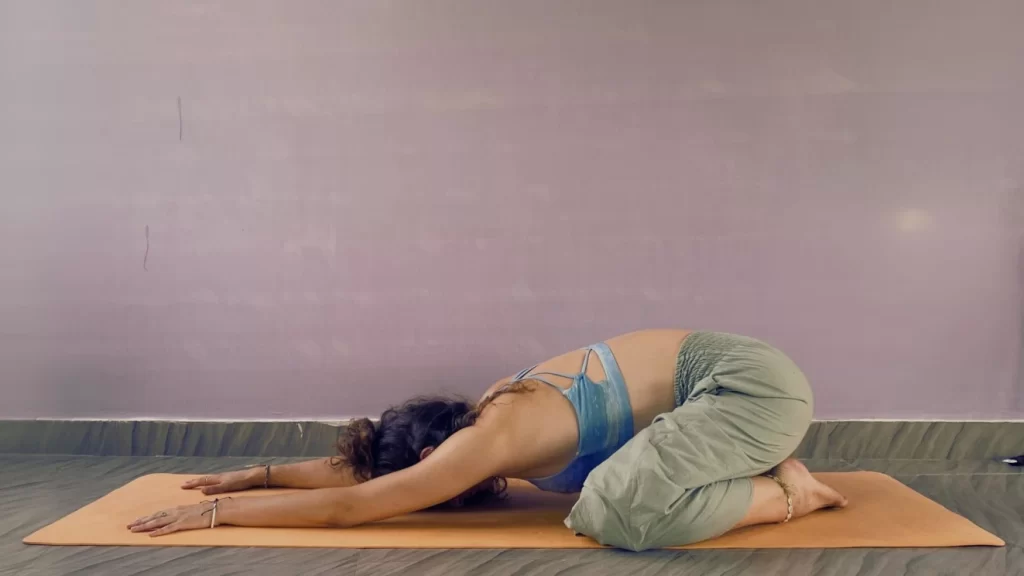
This grounding posture is super accessible for yogis of all levels, and helps to calm the nervous system and soothe the fluctuations of the mind. The pose engages the Muladhara Chakra, or the root of our energetical body, which creates a sense of stability.
Balasana encourages us to surrender to the earth with humility, allowing for vulnerability and the space to calm and soothe our minds. Grounding poses like this one are especially good for anxiety, as they start to bring the constant chatter of the brain back down to earth.
Bridge Pose (Setu Bandhasana)
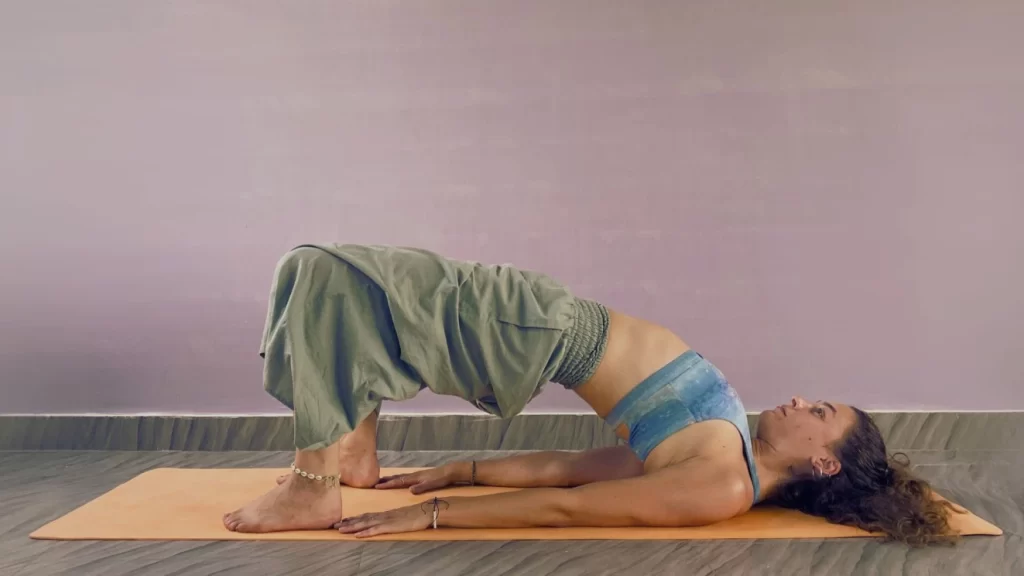
A wonderful chest opener, bridge pose helps us to breathe more deeply, delivering abundant oxygen and Prana (life energy) to the body and the nervous system. Opening the heart in this way helps us to release emotions, as the Anahata (heart) Chakra is stimulated, aiding us in finding balance.
Another grounding pose, you can use cushions, bolsters or any props you have under the sacrum to assist you here, making it a more restorative, relaxing posture in which to breathe deeply and release physical and mental tension.
Standing Forward Bend (Uttanasana)
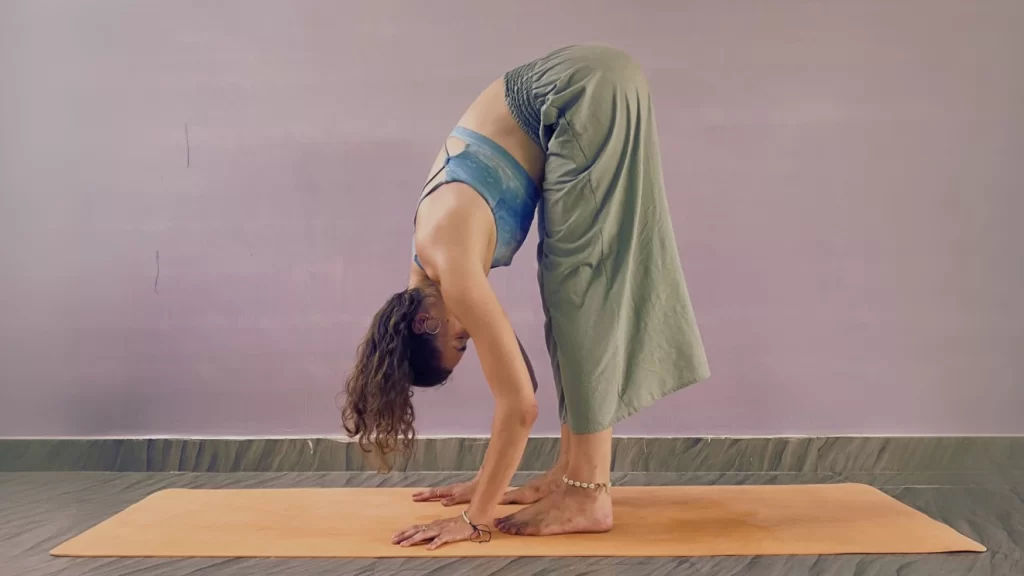
Yoga for anxiety doesn’t all have to be on the floor. A standing forward fold is a great way to release tension and decompress the spine and shoulders, an area in which many of us carry our stress and worry.
By letting gravity do the work here, we surrender ourselves into a deep stretch that increases blood flow to the brain and encourages inward reflection. Feel free to bend the knees to make it easier on the hamstrings – all that relaxing, dangling energy still applies.
Tree Pose (Vrikshasana)
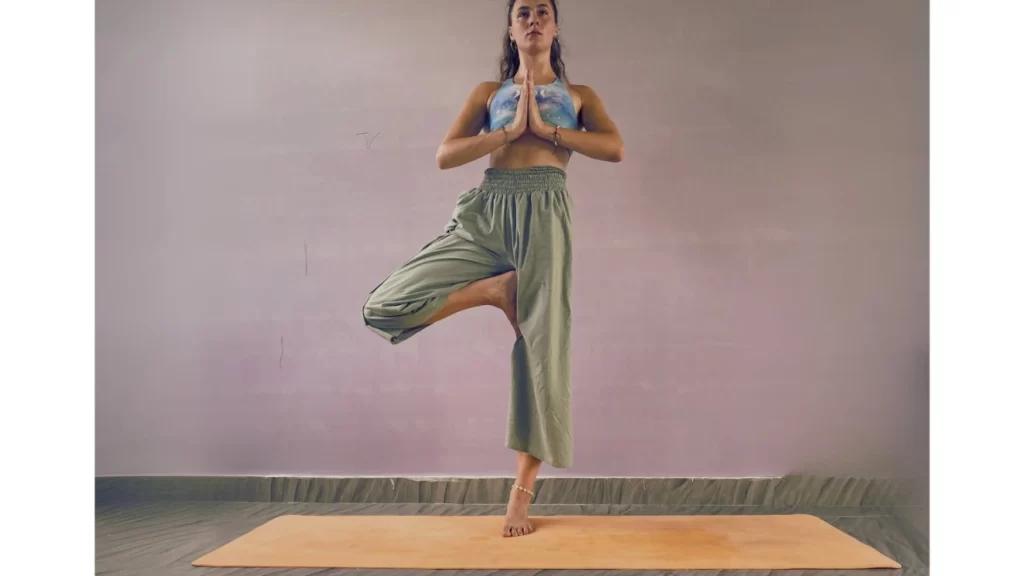
Perhaps one of the most recognizable poses in yoga, tree pose has many wonderful benefits for both the mind and body. The pose requires us to focus on one spot in order to balance effectively, helping to quiet the other chatter of the mind.
Focusing on the breath here and visualizing the roots of the tree growing from the sole of your foot is a powerful grounding tool, allowing yogis to step out of an anxious mind and into the present moment. Connecting to the earth and nature is just one of many ways yoga provides anxiety relief tools.
Seated Forward Bend (Paschimottanasana)
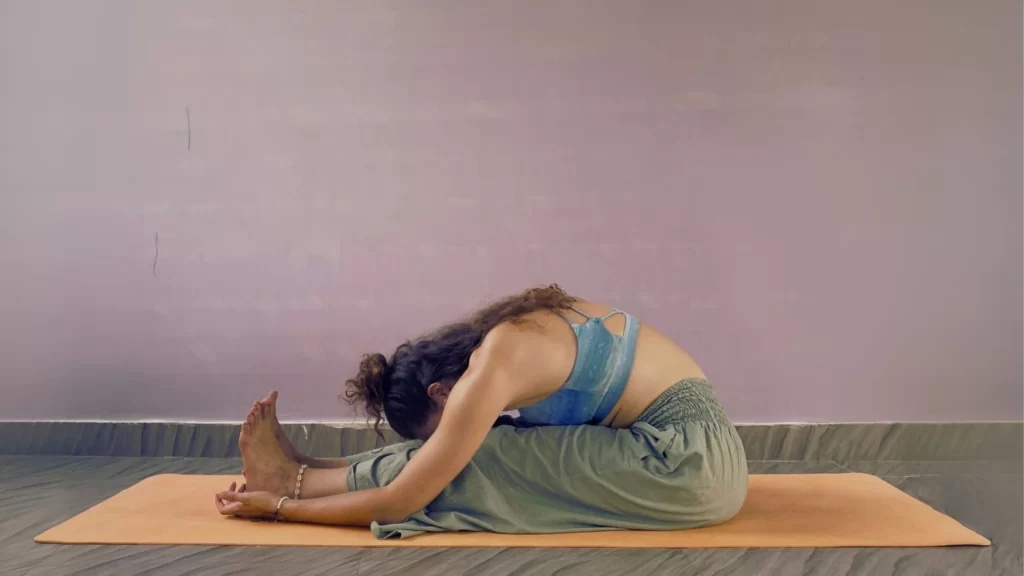
The seated version of our forward fold is just as powerful when it comes to yoga for anxiety. Being seated on the mat might be more calming than standing for some, and the pose engages the Muladhara (Root Chakra) and Svadhisthana (Sacral Chakra) for grounding and emotional release.
Folding towards the legs allows for a moment of introspection and quiet, as some of the exterior world is held at bay and we focus inwards. This withdrawal of the senses links to a yogic concept called Pratyahara, encouraging us to go inside ourselves in order to find peace. Returning to this practice when things get too much can be a great tool for anxiety relief.
Reclining Butterfly Pose (Supta Baddha Konasana)
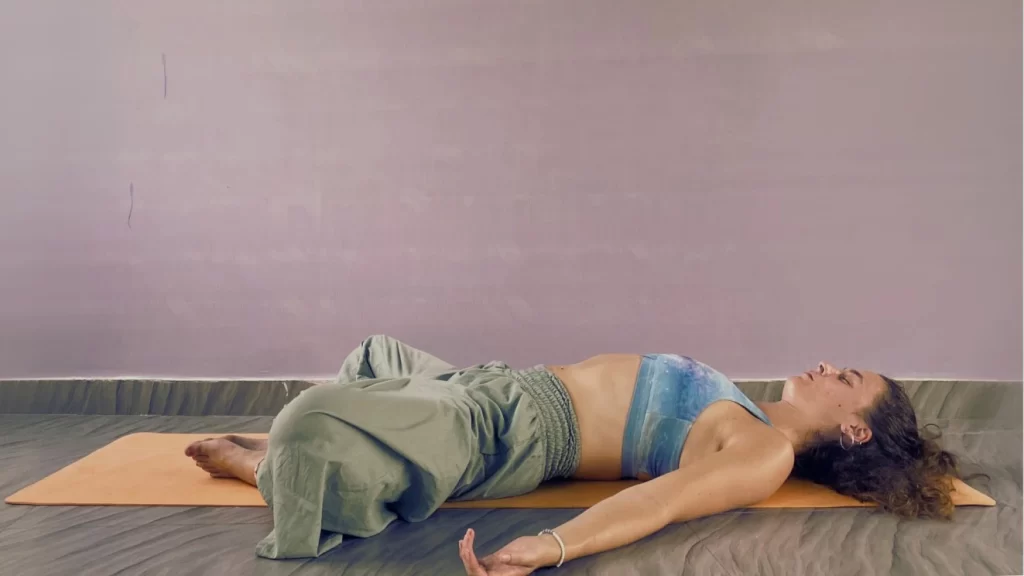
This Asana is a gentle and relaxing way to open the chest and the hip joints, helping with your mobility and loosening and tension that has transferred to the body from your anxious mind. Many yogis note that the hips in particular store a lot of our emotional weight.
Lying with the palms and heart open in this way feels like a gesture of receiving, whether that be the gifts of the universe, the energy of the room, the power of the practice or whatever resonates with you in the moment. The vulnerability of this openness can help to release stagnant emotions that are causing anxiety, encouraging us to open up not just physically, but to surrender emotionally and spiritually as well.
Eagle Pose (Garudasana)
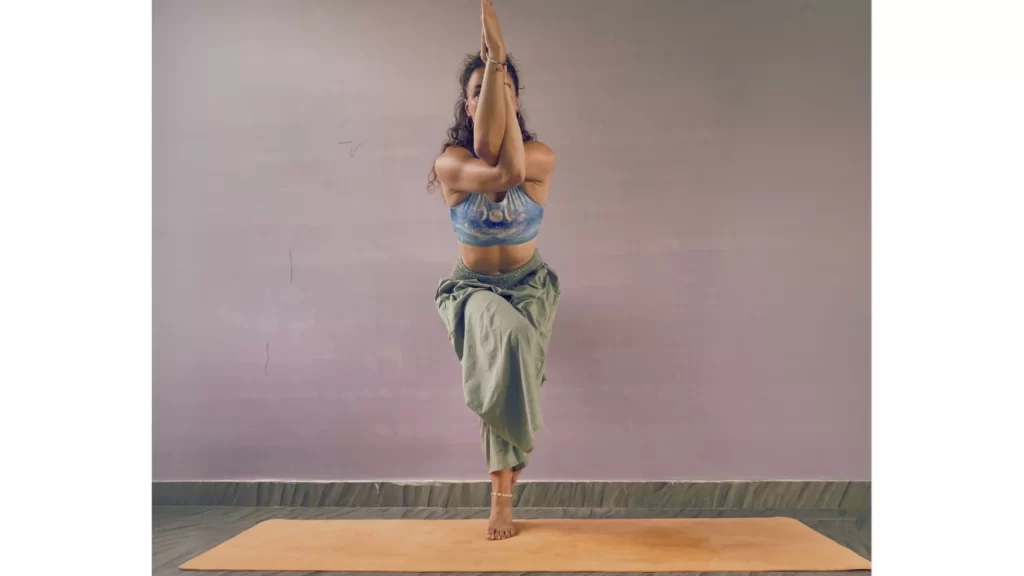
Eagle pose can be challenging for some, but there are lots of modifications to make it accessible yoga for anxiety. For example, you can just do one twist of the legs, and have the backs of the hands touching rather than the palms.
All variations effectively open the back of the shoulders and the lungs, stretch the hips deeply and encourage focus in order to balance. With multiple moving parts, the mind remains fixed on executing the Asana while breathing deeply, providing relief from anxious, spiraling thoughts. Like many yoga poses, it strengthens the mind-body connection, helping us to be more aware of our inner workings.
This pose is named after a great mythical bird in Indian scriptures, so you might channel its natural state of attention and selfless-service when performing this posture.
Corpse Pose (Savasana)
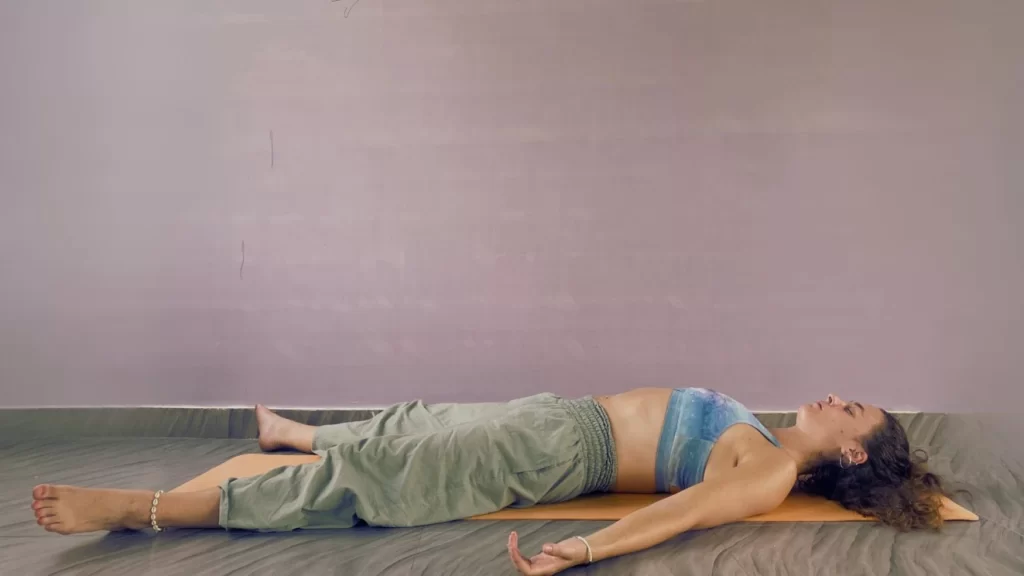
Many yoga classes finish with Savasana, a pose that allows for deep relaxation and the opportunity to completely let go.
In this Asana, we can simply observe the breath and mind and gift ourselves complete stillness. Corpse pose leads us to acknowledge that sometimes it is enough to just exist, to just be in time and space, and that we don’t need to be on the hamster wheel of productivity at all times to be a valuable person.
We surrender, sinking down into the earth, and eventually find a stillness that with practice helps to alleviate anxiety. Lying completely still is harder than it looks! Stay for a few minutes, and see how over time the mind might start to quiet.
Amplifying Yoga’s Benefits Through Pranayama
Pranayama, the practice of controlled breathing, is a fundamental part of yoga that profoundly deepens its overall effects. It works in harmony with Asanas and meditation to balance the body’s energy and mind and enhance the connection between body and spirit. ‘Prana’ refers to life force that is within and all around us, sustaining all living beings.
By regulating the breath, Pranayama moves this Prana around the body while directly influencing the nervous system, helping to reduce stress and anxiety and enhancing inner peace. Techniques like Nadi Shodhana (Alternate Nostril Breathing) and Ujjayi (Victorious Breath) are an accessible place to start, and make yoga an even more powerful tool for mental and emotional well-being. We will explore the transformative power of Pranayama in more detail in a separate article soon – stay tuned.
Your Yoga for Anxiety Journey
These postures are just a small sample of the physical aspect of yoga that can provide anxiety relief. They are a gateway to the internal practice that nourishes and expands us. To truly realize the benefits, remember to bring your awareness inwards when executing yoga Asanas, perhaps focusing on your breath. You might set an intention before practicing, and incorporate meditation or Pranayama (breathwork) in as you progress.
Whether you practice first thing in the morning or before you go to bed, try out these poses with an open mind and heart to begin to discover the deep power of yoga and its potential for anxiety relief. You might also be interested in some other blogs on our site, such as this one about untangling perception from reality.
Namaste.
References:
- “Yoga’s Chitta Vritti Nirodha.” YogaPedia, www.yogapedia.com/2/8458/meditation/silence/yogas-chitta-vritti-nirodha. Accessed 1 Sept. 2024.
- “Pranayama.” WebMD, WebMD, www.webmd.com/balance/what-is-pranayama. Accessed 1 Sept. 2024.
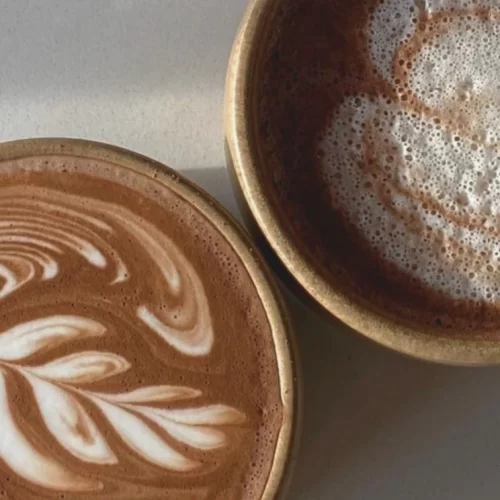
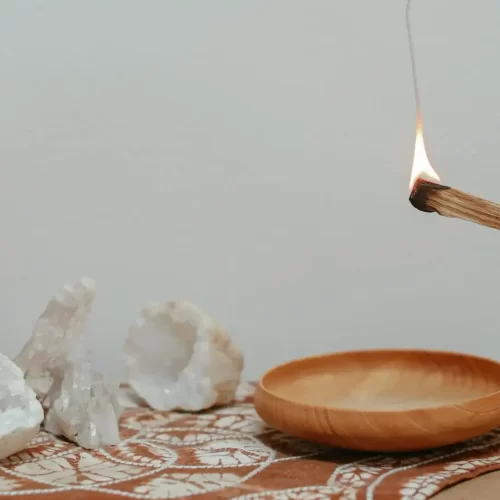
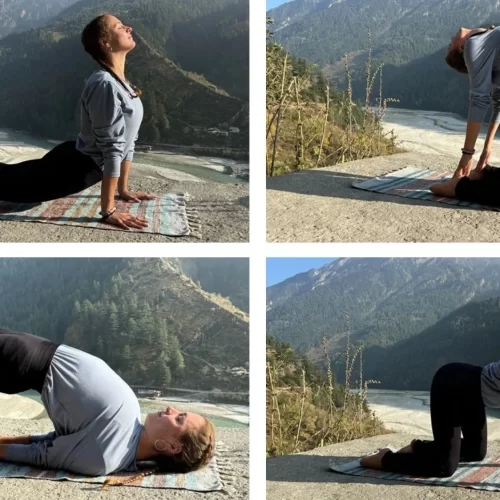
Leave a Reply